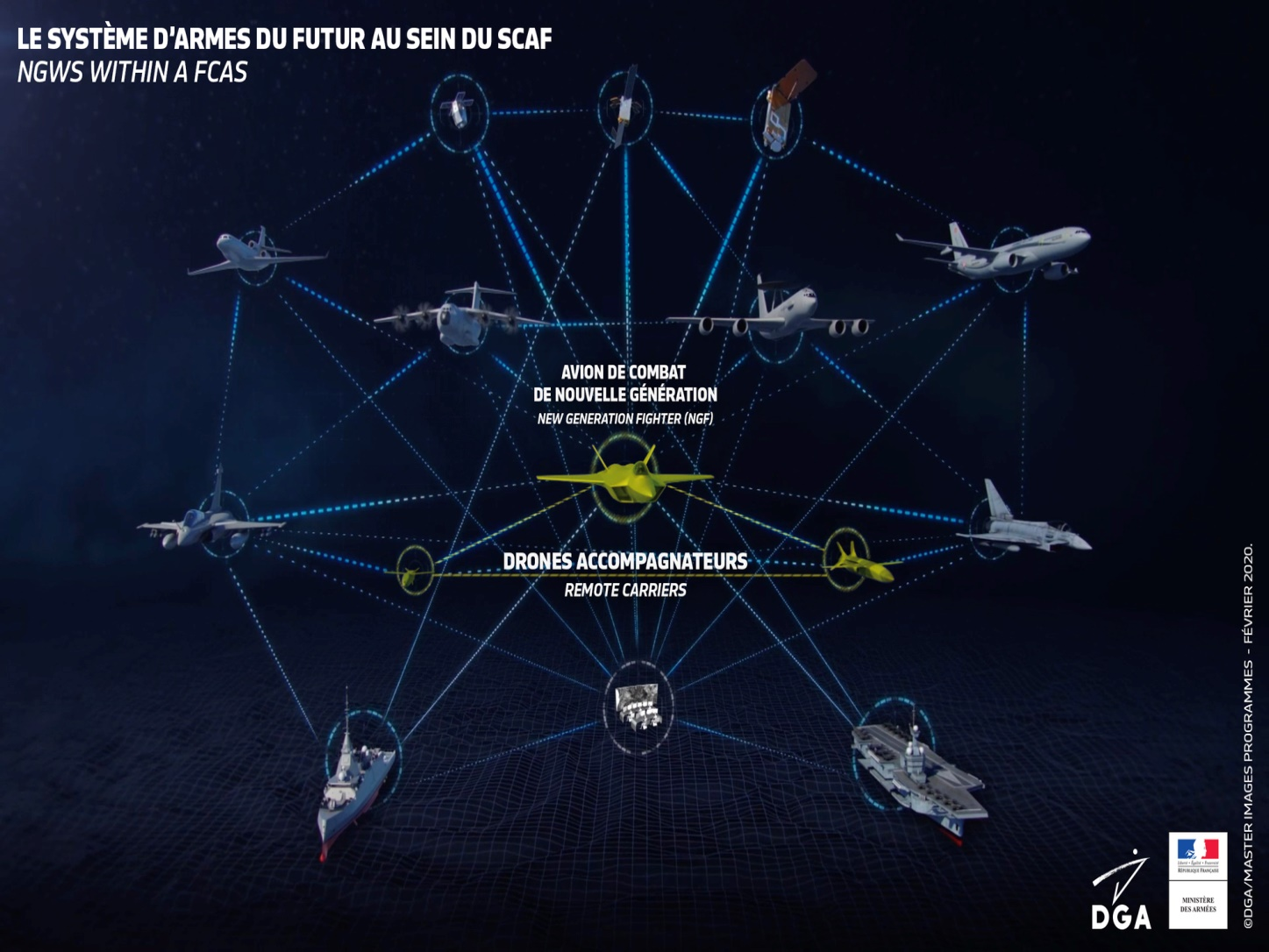II. FCAS: FROM A SYSTEM TO A "SYSTEM OF SYSTEMS"
All of the mission's witnesses emphasised one essential aspect of the FCAS programme: this project will be a complete innovation over previous combat aircraft projects. This innovation is reflected in the expression "system of systems". The FCAS will not just be another Rafale or Eurofighter, but an aviation "system of systems".
This "system of systems" consists of three concentric circles. In the centre, the combat aircraft called the NGF (next generation fighter). Then, around this circle and including, in addition to the NGF, remote carriers and the combat cloud, the NGWS (new generation weapon system). Then, the FCAS itself encompassing all the previous circles and adding other pre-existing national capabilities (Rafale and Eurofighter) as well as refuellers, reconnaissance aircraft and command systems, right up to satellites.
So, we should talk about several FCASs, all interoperable but each specific to one country. The three countries of the programme will cooperate to build the core of each national FCAS: the NGWS (NGF + Remote Carriers in a combat cloud). This NGWS will be able to act independently or in a network with other aviation, naval, land or space command or combat systems (we speak of an "NGWS within a FCAS") then, beyond that, interoperate with NATO and EU resources. The other national aviation combat resources that will network with NGWS system components (current airborne platforms, in particular Rafale and its future versions, future cruise missiles developed with the United Kingdom, current weapons and drones) are part of the equation from the start of the programme.
A. A NEED DEFINED TOGETHER
To have a chance of succeeding, an international project must be founded on a shared analysis of the needs . It was imperative that the programme's two, then three, member countries put their operational needs in a common envelope, and not a list that juxtaposed national needs, otherwise they would face the same difficulties as the A400M programme.
As the Court of Auditors highlighted in the 2010 report, discussed above and dedicated to weapons programme steering, a usual characteristic of cooperative programmes is an inflation of technical specifications which leads to very costly production conditions. For the A400M, Germany required particularly high performance standards for the navigation system. Similarly, NH90 helicopters are equipped with different engines for the French and Italian versions and are produced in 27 separate versions for all the participating countries. Another example: there are three production and assembly lines for the Tiger (France, Germany and Spain).
France and Germany undertook an analysis of shared needs in future combat aviation . All the desired specifications were the subject of a document co-signed on 26 April 2018 by General André Lanate, Chief of Staff of the Air Force, and General Bühler, Director General for Planning: the HLCORD (High Level Common Requirement), which Spain approved the following year. The HLCORD gives a relatively precise description of the requirements that the NGWS must meet as the core of the national FCAS of each of the programme's participating countries.
To obtain these shared specifications of the military needs, the two countries needed to agree on the missions to be carried out. The system must be versatile , incorporating France's request to be able to land on an aircraft carrier (whereas Germany does not have an aircraft carrier) and Germany's need to carry out the NATO missions taken on by the German air force. So the goal will be to build a system with Germany and Spain that meets the widest range of needs (which essentially matches the needs of the French army since it takes on the broadest missions). This future aircraft's "survivability" is underscored, as well as its ability to interoperate with NATO and EU resources. It must be able to conduct operations in contested airspace and engage all types of air defence. Above all, the HLCORD specifies that the FCAS's performance will be collective and derive from the ability of each of its components to interact with the others .








